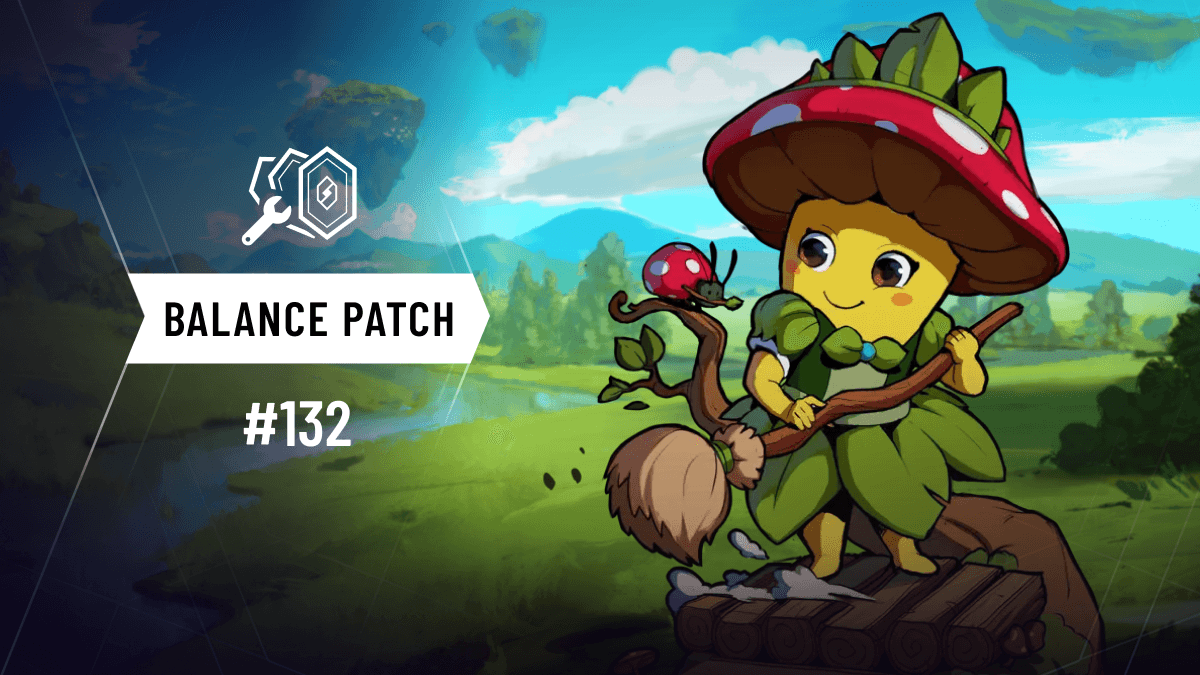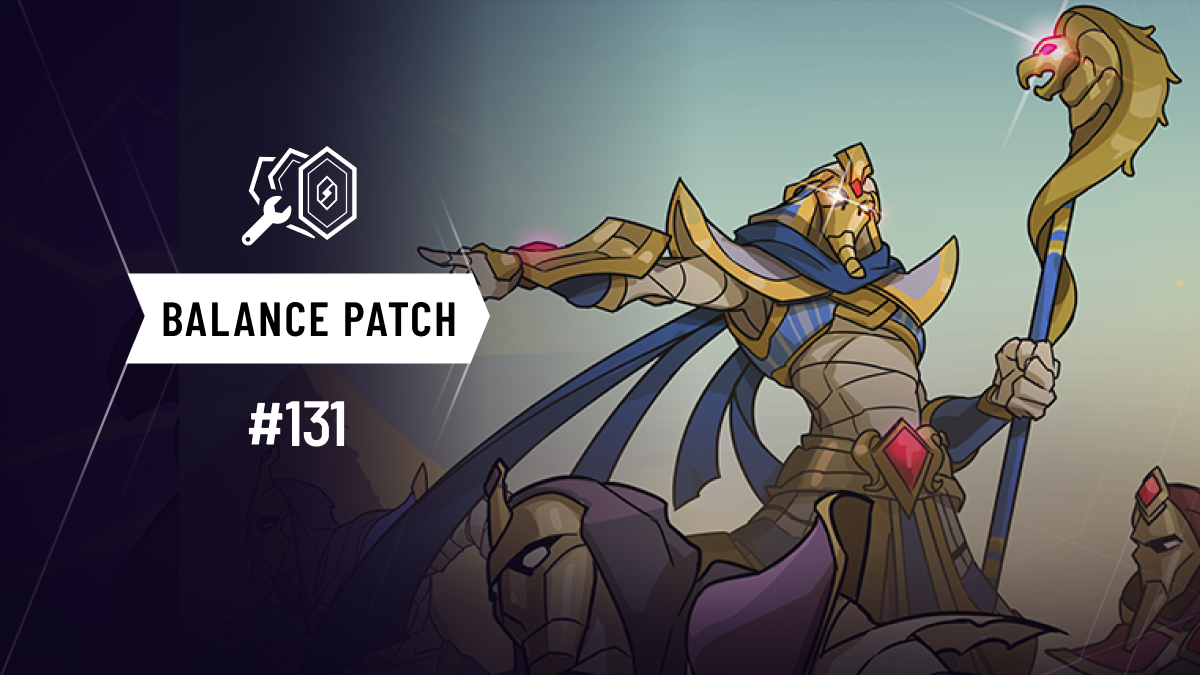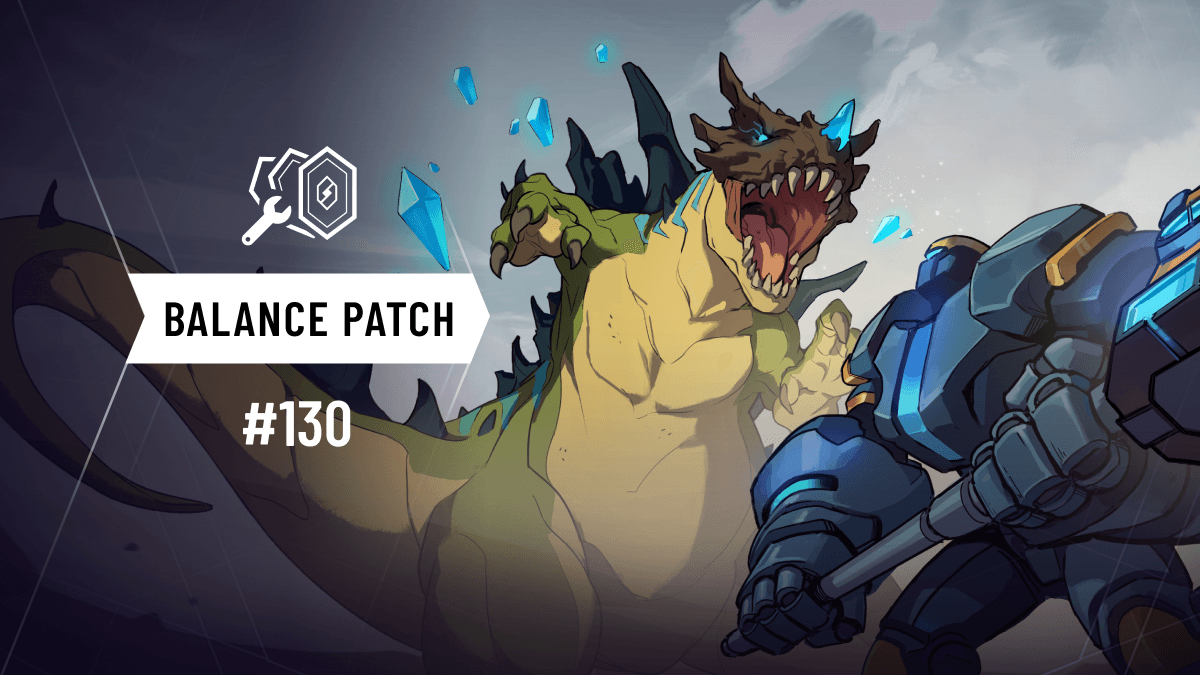Seeing Sky, Step 2: Agility
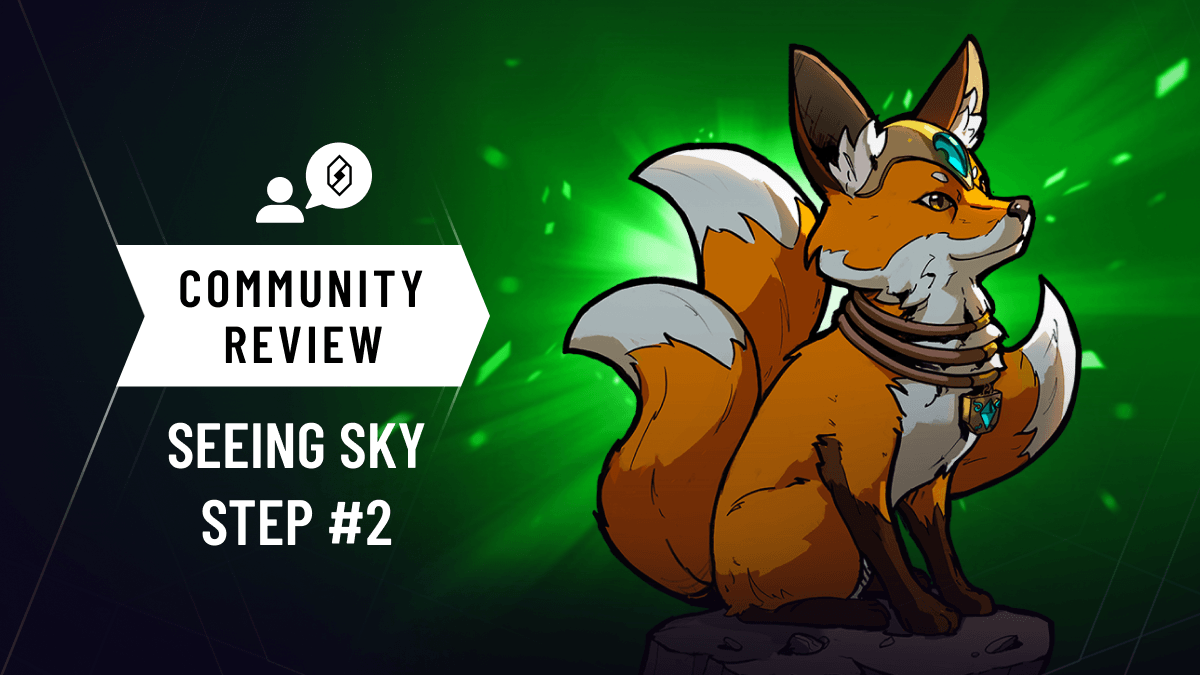
Howdy y’all, my name is Just Add Bacon, bringing y’all part two of the new Seeing Sky series, where we take a closer look at each of the prisms of Sky. Today’s prism is Agility, an adept and aggressive prism, advancing players who skillfully avoid removal. This prism is fast, and loves to beat down players early. So, in the spirit of the prism, let’s get going!
Disclaimer: JustAddBacon is a sponsored content creator under the Skyweaver Ambassadors program. Any opinions expressed in the article are strictly those of the author, and do not in any way indicate the policies, positions, preferences, or practices of Horizon
Lore
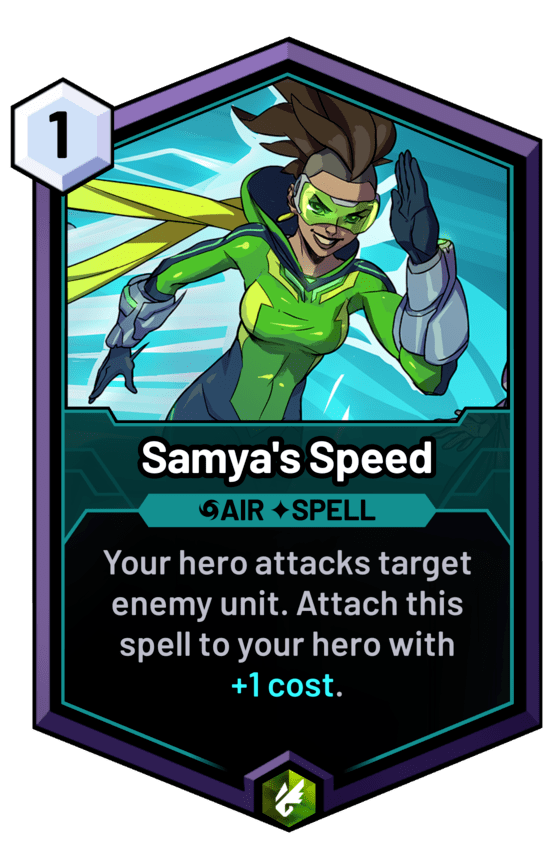
If Strength is the prism of conviction, Agility is the prism of freedom. Agility weavers charge headlong into life every day, and make the most of the strength and independence they have. These weavers believe strongly in ideals of independence and self-determination, and as such are also often in conflict with the more authoritarian forces of Sky. However, this focus on the individual can turn toxic if in excess, turning the weaver selfish and uncaring of others.
On an individual level, the Agility weavers are uniquely defined by their notions of freedom, which helps inform the choices they make. Even before becoming a weaver, Samya was already a renowned athlete in the sport of Skyslinging. Since acquiring the boon of the Agility prism however, she’s also added adventurer and fearsome combatant to her resume. Iris is also of an adventurous bent, traveling across Sky to learn about many different places and cultures.
Other Agility weavers take a more active role in shaping the future. Friendly rival to Mira, Mai embraces intellectual freedom and channels it towards new inventions, working on the cutting edge of research in Sky. Zoey goes one step further: as an Agility weaver, Zoey is a freedom fighter against Armis, rebelling against their authoritarian norms and seeking to liberate people from their rule.
As with Strength, Fox remains one of the more ambiguous weavers. However, I personally hold the theory that he’s a runaway from Armis. For starters, consider that all the lore on Armis points towards it being more authoritarian, which is a direct contrast with Agility’s identity. For evidence of this, see cards like Ghost Duster and Suit Up. As for Armis clashing with Agility, Chain Golem and Snap Trap provide a clear case of this, specifically through the weaver Zoey.
Now, all that said, how does this connect to Fox? For starters, take note that Strength, Agility, and Intellect are the only prisms where Armis units are found. And what do we find? In Xero’s lore, an unattributed quote: “In leaving Armis, I lost everything. Family, friends... purpose. But at last, I am free.” Of course, this doesn’t have to be Fox, but it must be someone important: if it wasn’t it wouldn’t be worth mentioning. Why do I believe it is Fox then? As given to us by Throne Blade, Fox himself says “Blade Sentinels still stand guard by Armis' throne, awaiting a prince who will never return.” Were he not the prince himself, how would he know? He’s the only person to mention this fact, the only one who seems aware of any runaway prince. With this context the rest of his lore makes sense; the conviction to be free, the “breaking of chains” he often mentions (chains may be even more literal than previously thought), and even the push-pull between Strength and Agility. Fox is our runaway prince, who broke away from Armis because he had the conviction to do so and rebel against its control. And thus, he claimed both the Strength and Agility prisms, making him easily one of my favorite heroes. Or, at least that’s the theory ;)
Design Stats
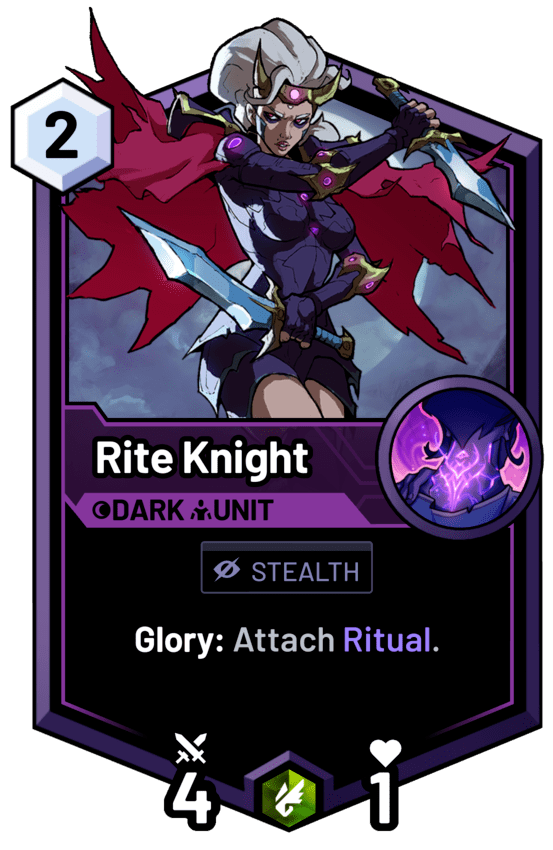
All stats courtesy of Horizon. Special thanks to Coulter “Based” Baker
- Avg. Agility Card’s Cost: 3.142 (Avg. Generic Card’s Cost: 3.4034)
- Avg. Agility Unit’s Cost: 3.357 (Avg. Generic Unit Cost: 3.6138)
- Avg. Agility Spell’s Cost: 2.84 (Avg. Generic Spell’s Cost: 3.1394)
- Avg. Agility Unit’s Power: 3.1 (Avg. Generic Unit’s Power: 2.9277)
- Avg. Agility Unit’s Health: 2.86 (Avg. Generic Unit’s Health: 3.5972)
Common Single Target Removal
- Banner, Grim Reprisal (Void Knight), Lightning Vial, Drone Surge, Drillbot
Common AoE Removal
- Hail of Arrows
Common Punish Options
- Fire Rune, Lightning Vial, Righteous, Catch!
General Design
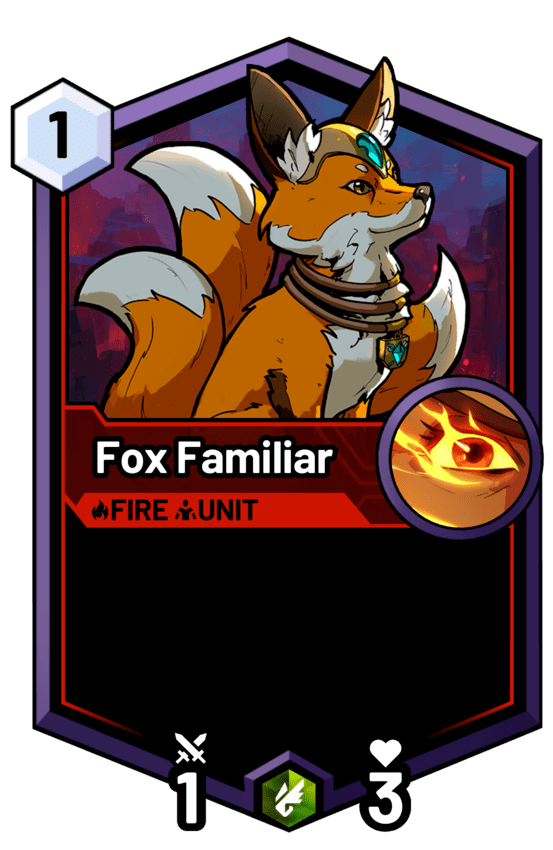
As may be gathered from the design stats, Agility is a rather polarized prism. Its average cost is low, as is its health, while its units tend to have outsized power stats. The result is the most generic statement that can be made about Agility: It does damage and fast. However, while it certainly has explosive power, its low health units means that they tend to be more easily removed from board, and a small listing of top end units confines its power to the early game.
At the earliest stages of Agility’s mana curve we see many of its best units. Fox Familiar is a ferociously impactful 1-mana unit, immediately presenting a large punish with almost no risk when played on turn 1 as player 1. The odds of any specific card in the opening hand is ~20% of the time, so we can expect this combo ~10% of the time. Additionally, the number of tempo efficient answers to Familiar are quite few. What this means is that it’s almost always going to be a strong turn 1 play, which the opponent almost always has to consider in their opening mulligan.
Aside from Familiar, which has even more subtlety I will address later, Agility’s 1-mana units are generally high on tempo and relatively safe. Canopy Archer and Mecharai grant relevant reach in aggro mirrors, and Kook Book is a surprisingly helpful 1-mana draw option. Fly Guy is a trap against unprepared hands, proving itself to be powerful disruption when well-timed. Finally, Reckless Racer and Speedster are explosive damage options, although Speedster is generally preferred for its ability to hit the enemy hero.
At 2 and 3 mana, Agility begins to find more technical options. Wallbreaking options are plentiful in units like Chain Golem, Imposter, Lightboarder, Shredder, and Void Knight, allowing early aggressive plays to circumvent Guard units with ease. Additionally, Agility’s disruption options flourish in this range; Huntaro, Xero, Righteous, and Tox all provide low-cost ways to interrupt the opponent’s plans.
At 3 mana, Agility also gains access to two elemental spell searchers, Hot Dog and Lau Sensi. If the repeated nerfs didn’t give it away, Hot Dog is a powerful searcher, readying itself while also often picking up Fire Rune. The result is direct damage that also draws, buffs Hot Dog or some other unit, and provides Banner to clear out smaller enemy units. Lau Sensi also provides a potent search for Samya’s Speed. Sensei’s effect grants the spell Banner, radically increasing its effectiveness. However, both of these combos are reliant on a specific set of draws, so Agility players also need to find alternative targets at higher costs.
Higher along the curve, Agility’s relevant units begin to peter out, but there are still numerous good examples. Disciple of Gusto is slightly slow for a Banner unit, but is rather reliable against empty boards. Its potent Shroud + Stealth combo also makes it a handy buff target, pairing well with Strength’s Nurtured Bond in elemental decks. Drillbot, Epic Eagle, and Vlad also provide notable burn options, although they all work best under different conditions. Eagle is exclusively an option for decks that plan to barely win, but its burst damage is explosive. Vlad is a bit safer than eagle, and also has a little more mid-game utility. Drillbot is the most reliable of these, but also deals the least damage to opponents. Despite this, Drillbot is generally the most preferred unit, as its reliability is critical in the majority of games.
Finally, Agility has four units along the top that I think are especially worth highlighting. Mighty Steed is perhaps one of the best 6-mana units in the game, thanks in no small part to its eccentric plurality of effects. For starters, double Banner raises the hero’s power to 3, enough to clear a wide variety of units in the game. This means it’s especially reliable, and presents a large payoff should it remain on board. Secondly, the fact that both it and the hero have Armor makes it an amazing check against burn decks, who suddenly find their damage output neutered against this unit.
Also in the double Banner category is Mountain Lion. At 7-mana this unit is a bit more expensive, but its general use is as a combo piece so that’s not terrible. Lion’s effect basically doubles the boost from all of your Banner cards, meaning it pairs well with options like Flock and Montage. On its own it's a bit vulnerable to removal though, so be careful with developing this unit.
The final two units I find worth discussing are Wu-Kin Scrapper and Great Gusto. Within the same deck, these two form a potent offensive core, although they can also be ran separately to fine effect. Wu-Kin is best played with either a low-power unit to punch into, into a weak board so it can immediately hit the enemy hero, or with its attachment to turn off a high-power unit. Gusto is best played whenever the opponent only has one unit left on board. Together the units help cover each other’s weaknesses. Should Wu-Kin be used to answer a large unit, the opponent likely wants to use another large Guard unit to block it, forcing a profitable trade. Or, after a Gusto is developed, the opponent’s best answers generally consist in Guard units since Gusto’s shroud prevents it from being targeted by enemy spells. Wu-Kin can then be used to disable or remove the units, allowing your dragon a clean bite at the enemy hero.
As for Agility’s spells, the prism's options are generally tempo-focused, but weak on value. Grim Reprisal features the golden ratio of 1 mana to 3 damage for removal. However, its recoil is painful, and can be crucial in aggro mirrors. Ensnare and Backstab are useful alternatives, but aren’t quite as versatile as Reprisal. Also at 1 mana are Fire Rune and Fair Ticket. 1-mana Banner options are always going to be handy, and having draw along with that is quite nice. On top of those benefits, both Rune and Ticket provide additional benefits, making them some of the highest tempo spells in the prism. Finally, Blitz presents a useful build-around option for Agility, giving it a powerful payoff for emptying its hand. Even if the hand isn’t emptied, the mulligan also has use. If the player is merely holding 3 cards total, Blitz has the effect of thinning the deck one card and mulliganing the player’s hand, giving it a higher floor for usefulness than expected.
Moving up the curve, Agility’s options diversify into a plurality of options, all of which are defined by their tempo. Lightning Vial is the cheapest option in the game for dusting a unit on board, and helps the prism reclaim an edge over Heart for card advantage. Turboboost, Card Sling, and Treasure Chest provide the more consistent draw options for the prism, although none of them are massive in value. However, that’s not generally needed for the prism, as it can string small +1 plays to make gains over slightly longer games. 3 mana also sees the introduction of Drone Surge and Run Wild, two of the prism’s best options for board control and direct damage. Generally speaking, Run Wild can’t be played effectively until later in the game, and Drone Surge needs a number of turns before reaching its wildly efficient 8 damage. However, both of these drawbacks can be managed with decent planning.
At higher costs, Agility’s spells tail off similar to its units. Head in the Clouds is a unique option for elemental decks, working as an investment for tempo on future rounds. Paired with other strong air options like Swarmsinger, Lau Sensi, Wu-Kin Scrapper, and Great Gusto, the spell can facilitate potent air decks within multiple prism combinations. Hail Of Arrows is also a notable AoE option for the prism, providing critical information and disruption to the user when timed well. Catch! is expensive at 6 mana, but its guaranteed damage to the enemy hero can be both reliable and threatening against a wide range of players. Many decks lack the ability to heal themselves, so options like Catch! provide the Agility player with a safety net after overextending early.
One final spell worth mentioning is the rarely seen Maelstrom. On its face, Maelstrom is a weird card, since it shuffles units back into the player’s deck, rather than killing them outright. However, this can be far better than directly killing units in the right deck. Shuffling in numerous low-cost or death units back into the opponent’s deck means that they are forced to draw those options again, which can easily stall them from finding their more important tools. However, the card is tricky to use, as it also sweeps away whatever board the user had. Be aware of this option, but don’t throw it into just any deck.
General Playstyles
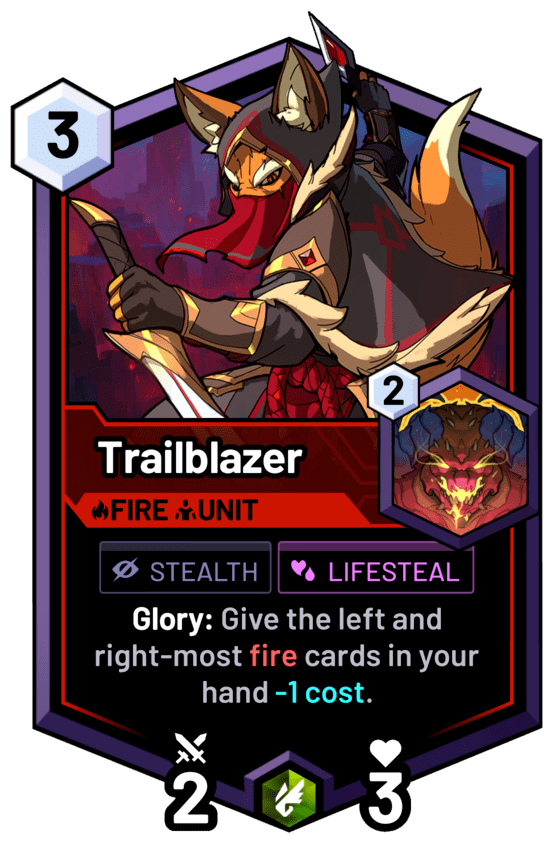
Agility does three things very well: make safe plays, make aggressive plays, and do damage. Balancing these elements is then the chief goal of the Agility player, and thus informs the decision of the complementary prism. Within this context, safe plays are hard to efficiently answer, aggressive plays are plays that promise big payoff, and doing damage is actually reducing the opponent’s health. All Agility decks will do some combination of all three, but they vary in what ratio they pursue these three avenues.
Aiming to make both safe and aggressive plays are decks like Zooey and Mai Uno. For those who don’t know, Zooey is a Zoo-type deck utilizing the Hero Zoey. Zoo-type decks are often synonymously called Swarm decks, and are aggressive builds focusing more on the quantity than on the quality of their units. For example, an aggressive Strength deck might play Buster, Squire or Psyche on turn 2, followed by Rubble Devil. On the other hand, a zoo deck would much rather open with something like Gus + Songbird on 2 and a Songrider on 3. Zooey exemplifies this strategy. Heart provides numerous cheap Banner options, like Pyrecrafter, Gus, and Light Knight, which complements Agility with great passive damage and board control. Combined with these things, Agility can cushion its exceptionally aggressive units with safer options like Chester. If the aggressive pays don’t pay off, Heart allows Agility to hedge its bets.
Mai Uno also follows the safe and aggressive playstyle, although its safety comes more in the form of reliability. Agility has strong removal options in terms of tempo, but can often be walled with better-statted units. Intellect complements this with powerful removal tools like Ivy, Leonitus, Drone Swarm, Water Rune, and Torques. Intellect also provides a powerful build-around option in Overdrive, which supplements Agility’s already good 1-mana units. Finally, Fren-Z and Big Friend round out the top end for the deck, while Hax provides a final late game burn option, rounding it out and making the deck a threat in any matchup.
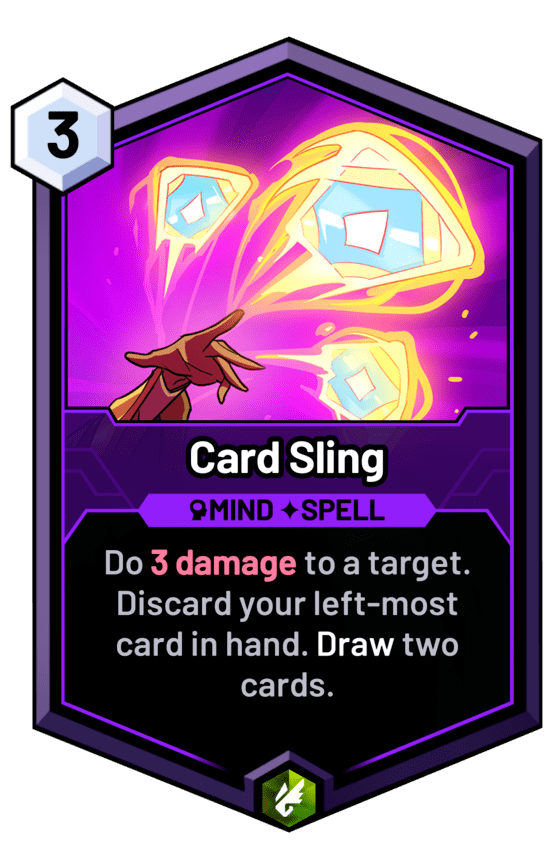
In terms of being aggressive and doing damage, no deck exemplifies that better than Fox… burn? Hyper? Aggro? Frankly, it’s my opinion that the names kinda blur at this point; the decks are indistinguishable right now, so call it what you will. Anyways, from the Agility perspective, Strength brings a few crucial cards that enable it to function better than any other known burn deck. Options like Chomp, Kha’s Wrath, and Tiamat’s Rage represent a vast, unblockable wall of damage accessible by any Fox player, meaning that most decks must aim to kill the aggro deck before their burn options come online. Cheap and punishing units like Buster, Squire and Psyche also make the deck explosive in the early game; if removal options aren’t found quickly, these units can rapidly produce damage. Even when not played early, their attachments still allow them to find use in the late game. Finally, while outclassed by Intellect, Strength’s hard removal options are certainly better than Agility’s, as cards like Sunder and Hyper Beam can rend through chunkier units.
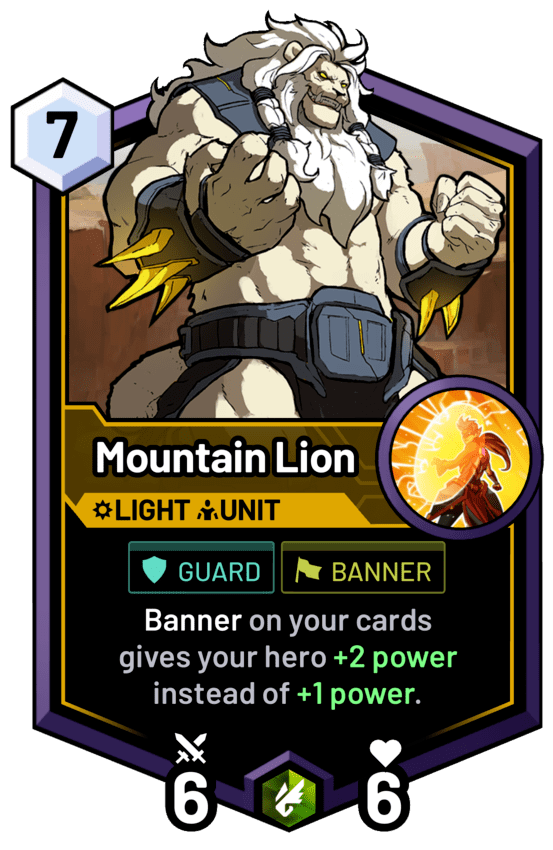
Finally, doing great damage and doing it safely is Iris Lion Combo, which focuses on the aforementioned Mountain Lion to secure lethal. Here, Lion is used in combination with Flock and Montage to produce wild bursts of damage to the enemy hero. If only those three cards are used, the Iris player will end up dealing 26 damage to the enemy hero. Every Banner card played before the Montage (like Baneful Strike, or Salvage + Century Key) adds four damage. The combo is wildly explosive, but requires some setup to pull off, usually in the form of Head in the Clouds and Orchid. Wisdom tools also provide ramping (Gift of Aya, Take Root, Gigabloom), stalling (Nature’s Grasp, Incinerate), healing (Jakintsu, Nefurti), and draw (see previously listed options). Though the deck has fallen out of meta recently (other burn-focused options like Fox and Sitti are much faster, and a more flexible variant involving Wu Kin Scrapper is being explored), it’s still one to consider.
Staple Cards
Fox Familiar
- I could write a dissertation on Fox Familiar. For here, I will do my best to keep it simple. It is very hard to make a bad play with Fox Familiar. You have to actively be trying to make a bad play with this unit. It’s incredibly safe, and features a powerful payoff for connecting it to face. Just make sure you have the wallbreakers to back this up, unless you are playing it as a bluff or trap. If you want to use it as a trap, keep a more punishing unit in hand (like Trailblazer), and use this to draw out premium removal. Doing so early can put the opponent on the backfoot for the rest of the game, as they will then be lacking answers for more damaging threats like Psyche, or Buster, Squire. If it's a bluff, keep something to follow up with if it’s called. Cheap draw, floaters, or other traps can be useful here.
Speedster
- A staple option for burn and aggro. Just punt it into the opponent’s face for best results. If it dies to Banner, you’re still up on tempo and dealt 4 damage. If they don’t kill it with Banner, you’re up on tempo and will deal at least 4 damage. If they kill it with a spell, use your excess tempo to emote.
Blitz
- One of my favorite build-around options. 1-mana to draw three is just wild (looking at you, Hydrate) but the question is how reliable it is. While getting all the way to nothing can be hard in some Agility decks, as options like Tiamat’s Rage or Fren-Z may be hard to pass up, the card is still useful at only +2, and even marginally useful at just resetting the hand and thinning the deck by one. Given that options like Rage or Unophobia are stuck in hand, it can functionally still be value-positive as long as you redraw viable options.
Fair Ticket
- It’s anything but. For best results pair with Light Ranger, but the card is generally strong with or without it. 1 mana for both Banner and draw is good, and granting Dash to a unit, even a cheap one, is usually fine. Together, it’s just very high tempo. However, this does require a unit to trigger, so keep that in mind when building your deck; this is not a pure draw option, but technically a buff option that happens to draw.
Fire Rune
- Similar to Fair Ticket, except that it’s less reliable with larger payoff. This one pairs exceptionally well with Hot Dog, and is also helpful in a number of niche situations. The flames option is also handy, and can be an easy way to go +1, but granting Fury is usually better, since it also thins your deck.
Void Knight
- Just a solid removal option with some niche usefulness. It dies to Banner, but that’s generally fine for decks that just want to press damage into the enemy hero.
Lightning Vial
- One of the cheapest dusting options in the game. Most decks will have at least a few death units, as the pool of strong units in most prisms isn’t large enough to exclude running death effects, so this card is handier than one would expect. Its wording also allows it to go face in a pinch, slightly extending Agility’s reach.
Hot Dog
- As many times as this unit has been nerfed, basically everyone should know that it’s just good. Mostly, it’s good because it draws Fire Rune, but it’s also good because it does immediate damage to the enemy hero and occasionally draws some fire spell not named Fire Rune. The deckbuilding requirement is a little tricky, but you generally only need ~8 fire cards total for it to work. If you plan well, and have some more expensive options like Tiamat’s Rage or Catch! you can get away with fewer, but be careful. Knowing your deck’s draw tendencies can be helpful for this, as are targeted draws like Firesight.
Songrider
- A reliable Banner unit that’s not easily answered. Its health is low, but it’s a fairly safe unit thanks to its Banner and death effect. An essential card for Air or board-focused decks.
Tox
- It may look a tad weak, but the math on Tox is strong. If your opponent spends their next turn just killing it, you can normally treat Tox as a 2-mana unit, or as one more than the cost of whatever they played to kill it. This may not always matter, as you’ll only actually gain the tempo benefit if Tox drains mana that they would’ve spent, but this can be remedied with smart plays. For best results, develop this in the early game on a weak board, such that they almost certainly need the drained mana. Additionally, you can also use it to guarantee the opponent can’t play a certain key card on the next turn, like Overdrive, Gift of Aya, or Kha’s Wrath. If you predict correctly, you can dramatically undermine the opponent’s plan.
Card Sling
- Another mathematically solid card. Discarding from your hand never feels great, but drawing two means that the card is always net-neutral, regardless of whether you destroy a unit or not. If you do, great, you’re at +1 in card advantage. Most notably, the card doesn’t require you to discard, it merely says that you do. So, if you have an empty hand, this is just a +1 that also does 3 damage to something. It’s rather useful.
Drone Surge
- If Card Sling is useful, Drone Surge is nutty. As an Agility player, reducing your health to 16 is not too difficult. Once that’s done, Drone Surge is functionally a 3-mana 4/4 with Dash that also does 4 damage on play. Technically, it’s a little bit weaker than that, but the card has a ceiling of 8 damage, huge for just 3 mana. Similar to Lightning Vial and Card Sling it also has the capacity to deal face damage, making it another safe card for Agility.
Drillbot
- It has good stats, kills a thing, and does incidental burn. Generally one of the better value options for Agility, since it asks for removal to answer. Overall just a solid card, and plays very well with buffs.
Epic Eagle
- A catchup option with a high ceiling. However, the wording on this card requires you to be at less health than the opponent, meaning it doesn’t do much for decks that are already winning. Run this if you’re playing a more midrange deck into a burn meta and need a way to snatch games.
Mighty Steed
- One of the best 6-mana units in the game. Double-Banner is just helpful, and its attached spell also makes it a potent threat. Run this if you want some top-end beef in your deck.
Wu-Kin Scrapper
- Another Agility option that has a strong use-case in doing face damage. However, Scrapper is also fairly good as a trap, as a hard removal option with its Deactivate, or a combo piece with Montage. Most uniquely, it also happens to synergize with Hunter’s Howl.
Synergy with other prisms
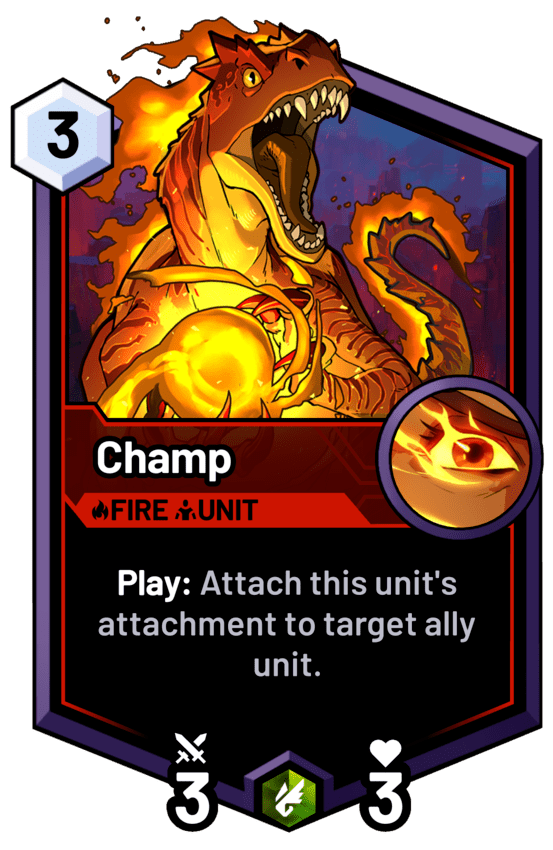
Strength
- Brings more stats to the deck, as well as potent burn and buff options. Agility’s tempo focus can help Strength a lot in the early game, smoothing out the bumpiness of Strength’s curve, allowing its board control tools more room to breathe. Additionally, hard removal options like Sunder and Hyper Beam lack common counterparts in Agility, granting Fox a slightly easier time wallbreaking than a hero like Iris or Zoey. However, Strength lacks good draw power and healing, so this is easily the hero most likely to run out of resources.
Wisdom
- Wisdom has lots of generically good cards like Niko, Incinerate, and Turn the Tide, granting Agility access to a similarly consistent gameplan as before. However, Wisdom also has numerous midrange and top-end options, like Kha Meht, Meng’Long, and Sky Phoenix, which can grant the deck some surprising depth. Wisdom is somewhat lacking in burn tools though, and its units don’t tend to have high power stats, so be aware of this if constructing a purely aggressive deck.
Heart
- Heart has a lot of cheap draw power in floaters like Crypto, Shade, and Chester, swarm tools like Wall of Dead, and unique burn options like Festival Cannon. Put together, one finds numerous archetypes in Zoey, from builds like Zoo to other options like XiaYu’s Air tribal or more midrange builds. Heart only has one good hard removal tool though (Dead Weight), so you’ll need to be prepared to either win before then, run something like a Great Gusto, or get crafty with units like Avatar of Light or Blood Hunter.
Intellect
- Possessing far and away the best hard removal tools in the game, Intellect gives Agility great ways to wallbreak. Ignoring wallbreaking, Intellect also has powerful swarm options with Micron Drones (Lapin Microneer, Drone Swarm, Torques), which gives it a serious edge in aggro mirrors. Finally, top-end options like Big Friend, Fren-Z, and Overdrive grant Intellect late game depth that other aggressive prisms tend to be lacking, making it solid overall. The only thing really missing is burn damage, but Hax can remedy this.
Difficulties
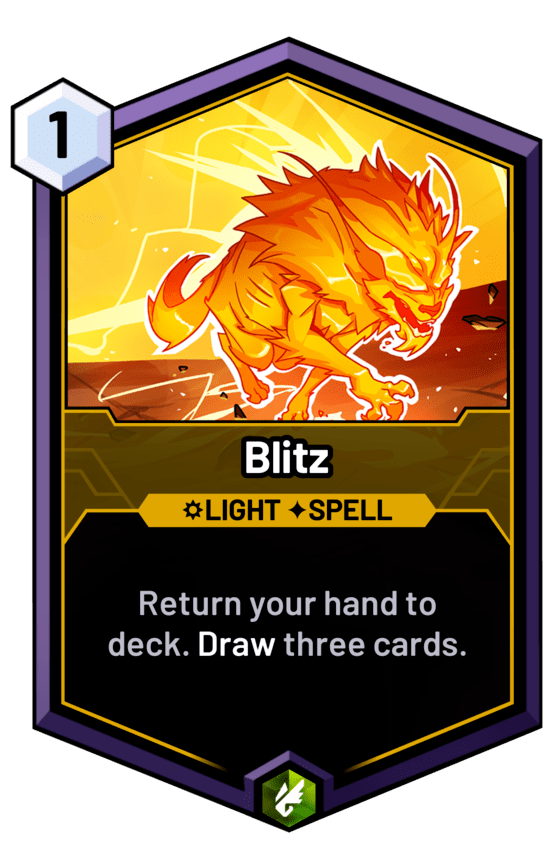
Far and away, the biggest limiter on Agility is recoil damage. Agility loses half of its starting health for breathing, and this is almost an exaggeration. While options like Songrider, Fire Rune, Fair Ticket, Grim Reprisal, Void Knight, and many others are certainly powerful, they all require recoil damage to get the full value. Individual bits of this may seem slight, but they add up quickly, and can rapidly become entrapping in an aggro mirror. Of course Agility has some ways to combat this, but the options are limited and narrowly tailored.
Another common issue to Agility is its lacking top-end. Many of the complementary cards I’ve mentioned in this article tend to be higher cost cards from other prisms, and that’s not an accident. Agility has few high-end options, and even fewer that are good, so it often finds itself relying on the supporting prism to supplement its top-end. Thus, options like Tiamat’s Rage or Fren-Z become extremely important for the deck, as the Agility cards must work towards the plans of the late-game options. Of course, players could simply try to win before getting to such a point, but even the fastest decks tend to have lethal clocks around turn 9, meaning that higher cost options must still be considered. It’s not the worst problem for the prism, but it does limit what it’s capable of.
Conclusion
Pitching itself as the appropriate answer for aggro addicts like I, Agility astounds all with its raw speed and aggression. Its collection of safe, tempo-efficient tools makes it a tricky prism to deal with, and its numerous burn options gives it ample avenues for sneaking games away from opponents. However, its recoil and lack of hard removal present an issue for it in the later game, and few top-end threats consign it to trying to end games rapidly. Altogether, it’s a very enjoyable prism to play, and one of my personal favorites. Next week I unwillingly and woefully wander into the worrisome world of Wisdom; wish me luck! Until next time, I will see y’all in Sky!
Decks
Zhew’ Zooey
SWxHRA02iHzDtaeN2DhwUwDUZBCjVvZFJhcd6D2AwMqtiQuanwrCJP8fryU6u2QXC9UkecMhQCnkqj6SCFDjqsFth1
Mai Uno
SWxAGI02jiDLEDaRyCNGK2d4xVSPV7hhUHSy3sHQHvAKFCZumFET2etZBzzog7npPjhmqcMF2BCJqoEU5KeT4EZEVu
Rain’s Fox
SWxSTA02MZNEHzxnfCijRSG88E88B2tATMXAq99HEnp5PzsPZ4JVxL9iQFu2jRvQomF4QJucywwi8At2znqTtvBFy
Iris Lion Combo
SWxAGW02iHzDMywzDiNAGMgMt47aFwcNu7kuiybxQruJ4A9JVY9PWtJxRGS3sZEBsvzYHkc7QJQaEbBum37D1zDNf9
Join the Discussion! 🎙️
To chat with the rest of the community and the Horizon team, join our Discord server! Subscribe to our subreddit to share your ideas, and be sure to follow us on Twitter or Instagram! Also—we’re on TikTok too!
Skyweaver is in Open Beta. You can play for free at play.skyweaver.net or download the game on Windows, Mac, Linux, IOS, and Android!

Recent Posts


